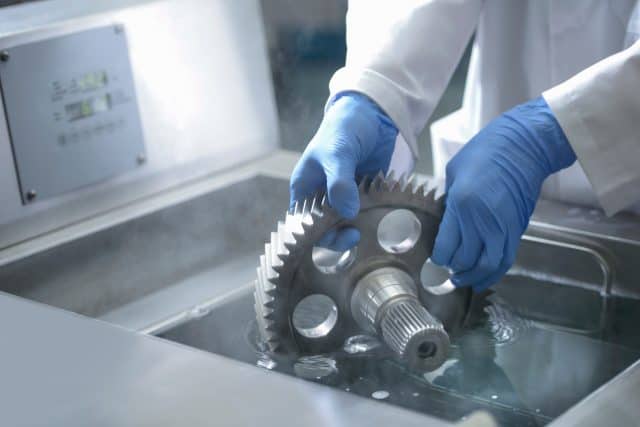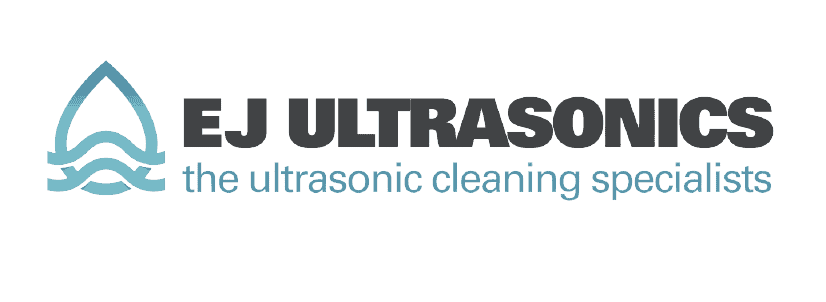What is Ultrasonic Cleaning?
Ultrasonic cleaning sounds like something extra-terrestrial and complicated, and it kind of is. It’s a cleaning process that uses high-frequency sound waves.
Ultrasonic cleaning is a process that uses sound waves to clean surfaces. It is typically used for industrial and commercial applications but can also be used for household cleaning tasks. Ultrasonic cleaners work by generating high-frequency sound waves that create cavitation bubbles in liquids. These bubbles collapse and create a scrubbing action that can remove dirt, grime, and other contaminants from surfaces.
What is ultrasonic cleaning technology?
Ultrasonic technology is the application of sound waves at frequencies greater than the audible range. Ultrasonic cleaners use this technology to create cavitation bubbles in liquids. These bubbles collapse and create a scrubbing action that can remove dirt, grime, and other contaminants from surfaces.
How does it work?
The process involves using high-frequency and high-intensity sound waves in a liquid to enhance the removal of foreign objects or contaminants. The waves create cavitation bubbles, which quickly collapse. As the bubbles implode, they release a stream of energy that can clean surfaces and remove contaminants.
Ultrasonic cleaning has grown widely and has been used for a variety of cleaning processes and surface conditioning. Ultrasonic cleaning may be outside of the typical definitions of cleaning, but it does basically use the same techniques.
Demands for increased cleanliness have been the driving force for the development of more sophisticated technology, especially over the last decade.
Ultrasonic cleaning is often used to clean industrial parts and components, as well as medical equipment. It is also becoming increasingly popular for household cleaning tasks, such as cleaning jewellery and eyeglasses. However, its most common applications are industrial.
What is heated ultrasonic cleaning?
Heated ultrasonic cleaning is a process that uses sound waves and heat to clean surfaces. It is typically used for industrial and commercial applications but can also be used for household cleaning tasks.
How to use an ultrasonic cleaner?
To use an ultrasonic cleaner, you will need to add the appropriate cleaning solution to the tank and then submerge the items you wish to clean. The ultrasonic waves will cause the solution to agitate and create cavitation bubbles. These bubbles will collapse and release energy that will clean the surface of the item.
Applications:
Industrial
Ultrasonic cleaning is typically used in industrial and commercial applications. It is an efficient and effective way to clean industrial equipment, parts, and tools. Ultrasonic cleaners can also be used to clean medical instruments and devices.
Household
Ultrasonic cleaners are also becoming increasingly popular for household cleaning tasks. They can be used to clean jewellery, eyeglasses, and other delicate items.

Benefits of ultrasonic cleaning:
Ultrasonic cleaning has several advantages over traditional cleaning methods. It is typically faster and more effective than manual cleaning, and it is also gentle enough to be used on delicate items.
If you are looking for a more thorough and efficient way to clean, ultrasonic cleaning may be the right choice for you.
- Ultrasonic cleaners can clean items more thoroughly than traditional methods, such as handwashing.
- They can also save time since the cleaning process is often shorter with an ultrasonic cleaner.
- Ultrasonic cleaners are also relatively gentle, so they can be used to clean delicate items without damaging them.
Ultrasonic cleaning systems have the ability to tackle tough cleaning challenges and complex components
Ultrasonic cleaners are used by a wide variety of industries and businesses, including industrial manufacturers, commercial businesses, and households
Who uses it most?
Ultrasonic cleaners are used by a wide variety of industries and businesses, including industrial manufacturers, commercial businesses, and households. If you don’t have an ultrasonic cleaner of your own, you can contact a professional ultrasonic cleaner service, such as us at EJ Ultrasonics. Our ultrasonic cleaning buying guide gives more tips on how to make your decision.
Cost:
Ultrasonic cleaners have a great payback on capital outlay as you will be able to save money instantly on chemicals, labour and energy. Most customers see a payback within a year on ultrasonic cleaning systems.
The difference it can make:
Ultrasonic cleaning can make a big difference in the cleanliness of an industrial or commercial setting. It can also save time and money by reducing the need for replacement parts and repairs.
Ultrasonic cleaners are available in a variety of sizes and can be used to clean a wide range of items, including industrial parts, jewellery, eyeglasses, and more.
If you require any ultrasonic cleaning services, want to know more information about the process, or have any other questions, please get in touch with us today. We’d be happy to help!


